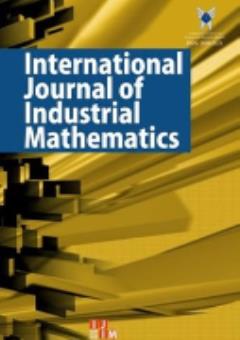Extended Transportation Problem with Non-Homogeneous Costs and Non-explicit Output- A DEA Based Method
Subject Areas : International Journal of Industrial Mathematicsسعید محرابیان 1 * , علی هادی 2 , حسین قهری 3
1 - Department of Mathematics, Faculty of Mathematical Science Computer, Kharazmi University, Tehran, Iran.
2 - Department of Mathematics, Science and Research Branch, Islamic Azad University Tehran, Iran.
3 - Department of Mathematics, Faculty of Mathematical Science Computer, Kharazmi University, Tehran, Iran
Keywords: Linear Programming, Non-homogeneous cost, Transportation problem, Data envelopment analysis (DEA), Production possibility set,
Abstract :
The transportation system could be considered as one of the most prevalent issues in the field of linear programming. There are various costs for shipping from one source to another destination, which are not homogenous. In a study by Amirteimoori [A. Amirteimoori, An extended transportation problem: a DEA based, Central European Journal of Operations Research, 2011], the extended transportation problem was introduced, while many significant questions regarding the production possibility set, the place of costs, the benefits, and the nature of these costs were not addressed. Considering the recent improvements provided in data envelopment analysis, in the present study, we attempt to propose a more meticulous model, which tries to solve the issue of transportation with non-homogeneous costs. Moreover, we provide a comprehensive and consistent reality solution to the transportation problem.
[1] A. Amirteimoori, An extended transportation problem: a DEA based, Central European Journal of Operations Research 14 (2011) 513-521.
[2] A. Amirteimoori, An extended shortest path problem: A data envelopment anlysis approach, Applied Mathmatics Letters 7 (2012) 1839-1843.
[3] C. P. J. Lovell, Radial DEA models without inputs or without output, European Journal of Operational Research 118 (1999) 46-51.
[4] G. R. Jahanshahloo, A Method for solving 0-1 multiple objective Linear programming problem using DEA, J. Oper. Res. Society of Japan 46 (2003) 1189-202.
[5] F. Meng, B. Su, E. Thomson, D. Zhou, P. Zhou, Measuring Chinas regional energy and carbon emission effciency with DEA models: A survey, Appl. Energy 183 (2016) 1-21.
[6] F. Hosseinzadeh Lotfi, Relationship between MOLP and DEA based on output-orientated CCR dual model, Expert Systems with Applications 37 (2010) 4331-4336.
[7] L. H. Chen, An extended assignment problem considering multiple inputs and outputs, Appl. Math. Model 3 (2007) 2239-2248.
[8] Mokhtar S. Bazaraa, Linear programming and network flows, New York: Willey, 2011.
[9] K. Djordjevic, Evaluation of EnergyEnvironment Effciency of European Transport Sectors: Non-Radial DEA and TOPSIS Approach, energies 12 (2019) 1-27.
[10] W. Maity, A new approach for solving dualhesitant fuzzy transportation problem with restrictions, Indian Academy of Sciences 75 (2018) 44-75.
[11] S. Steuer, Multiple Criteria Optimization: Theory, Computation and Application, New York: Joun Wiley and Sons, 1986.
[12] M. Zarafat, L. Angiz, An alternative approach to assignment problem with nonhomogeneous costs using common set of weights in DEA, Far. East J. Appl. Math. 10 (2003) 29-39.
[13] S. Saati, Generalized Dealing Problems with Fuzzy Differential Costs with the help of DEA, Quaterly J. of Sciences 18 (2008) 255-271.
[14] V. Gurupada Maity, Analyzing multimodal transportation problem and its application, Neural Computing and Applications 5 (2019).
[15] Y. Sudipta Midya, Intuitionistic fuzzy multistage multiobjective fixedcharge solid transportation problem in a green supply chain, International Journal of Machine Learning and Cybernetics 20 (2020).
[16] L. Cardillo, A DEA model for the efficiency evaluation of nondominated paths on a road network, European J. Oper. Res 121 (2000) 549-558.
[17] A. Charnes, Measuring the efficiency of decision making units, European Journal of Operational Research 2 (1978) 429-444.

